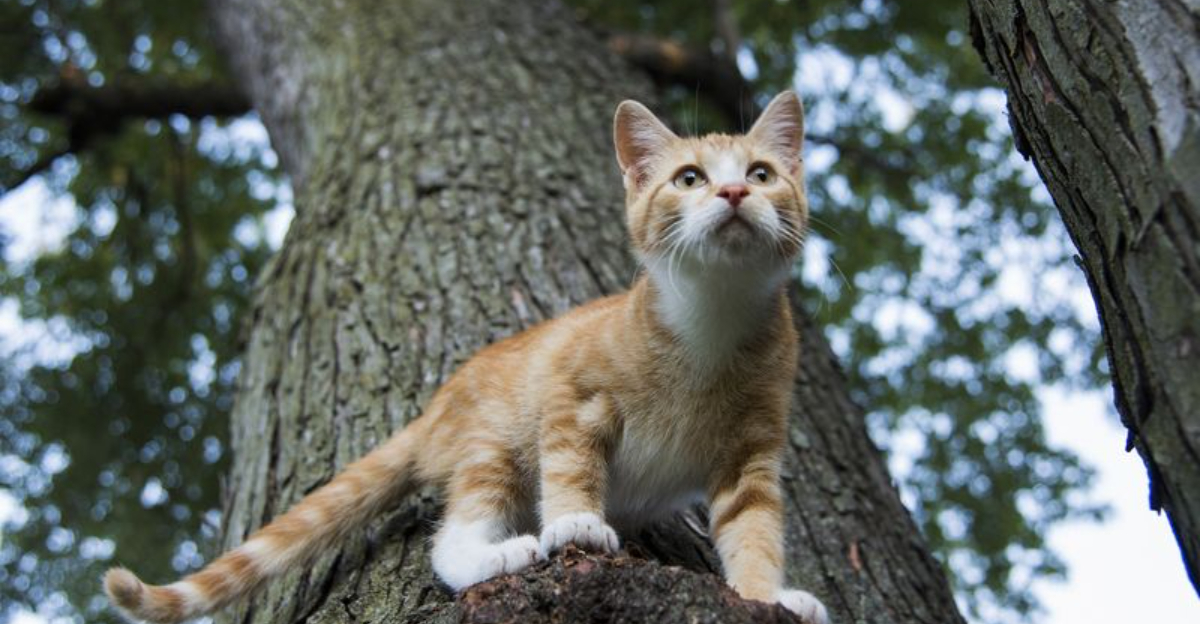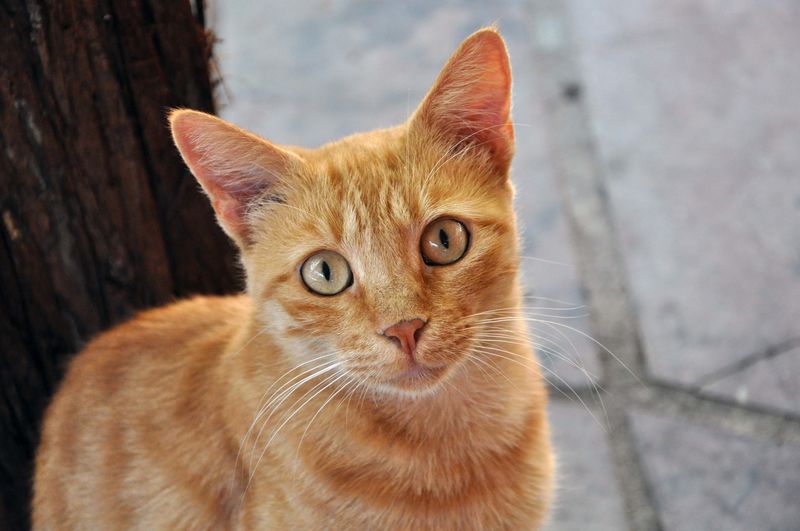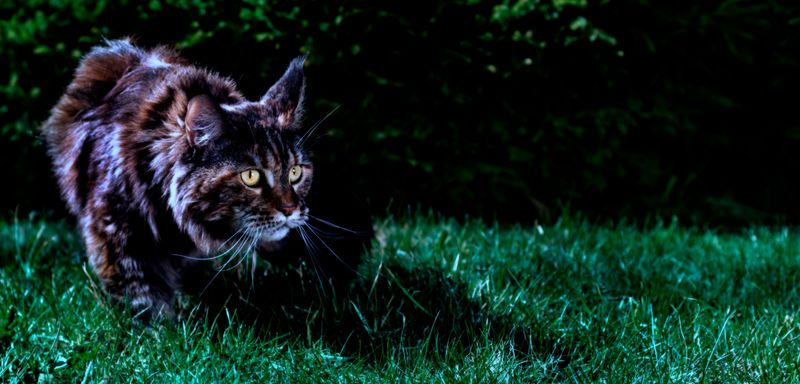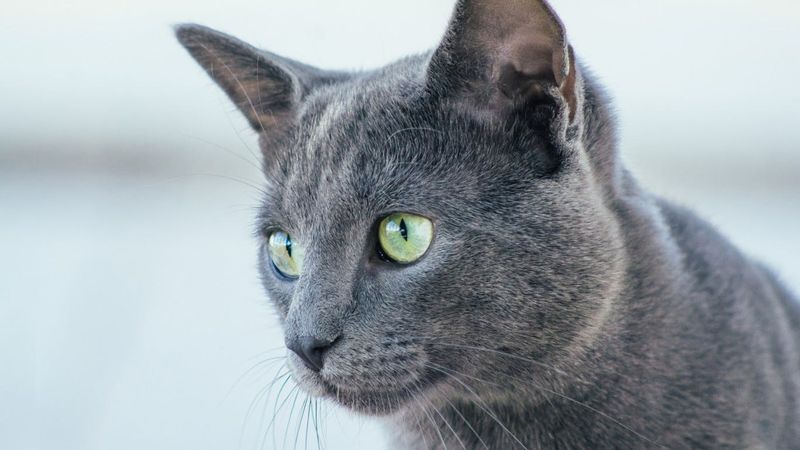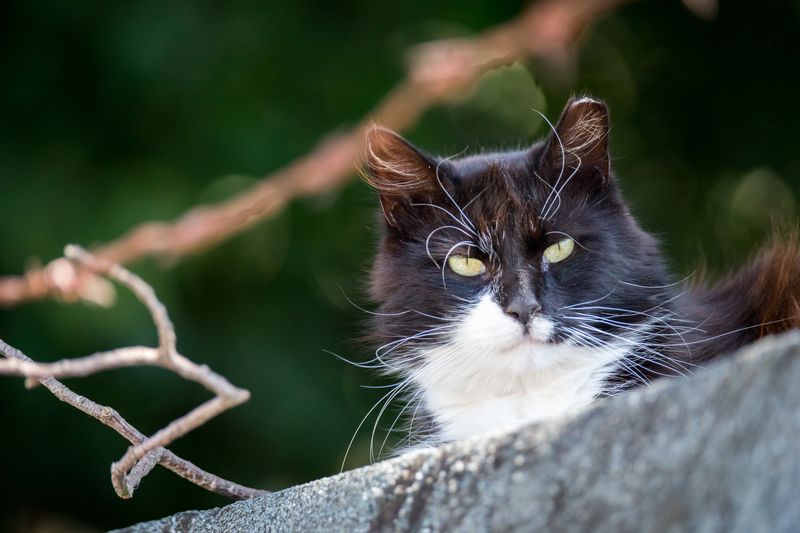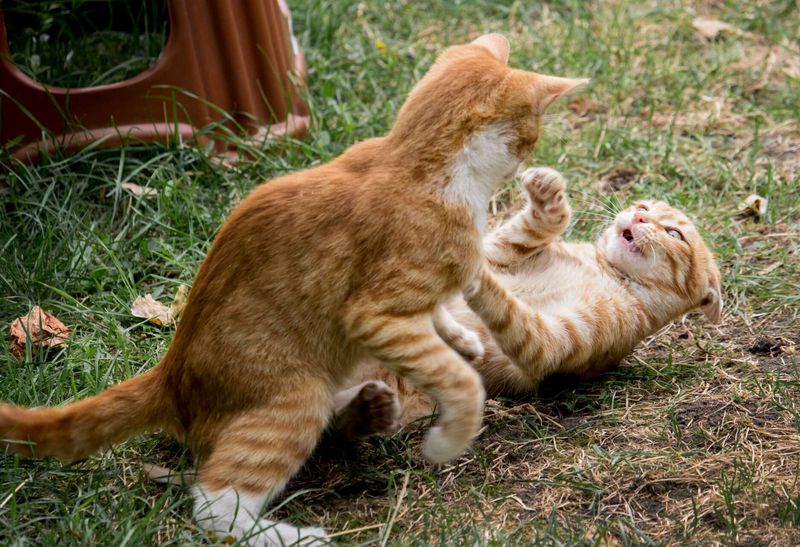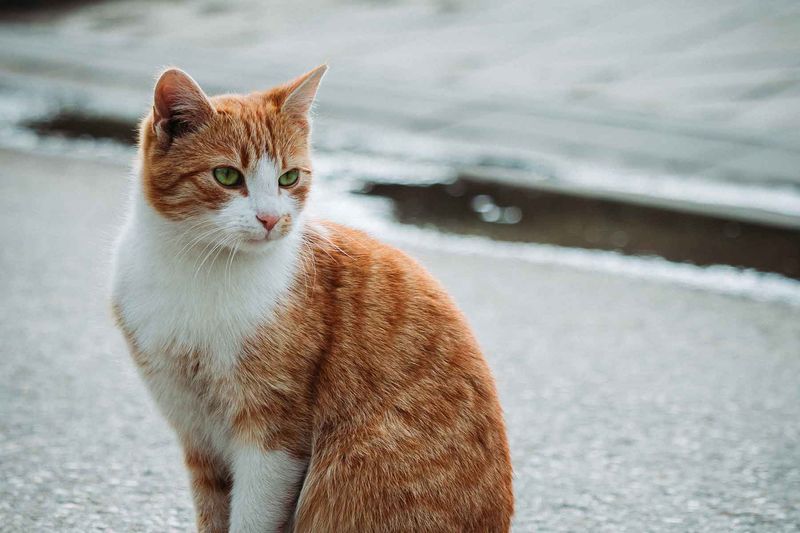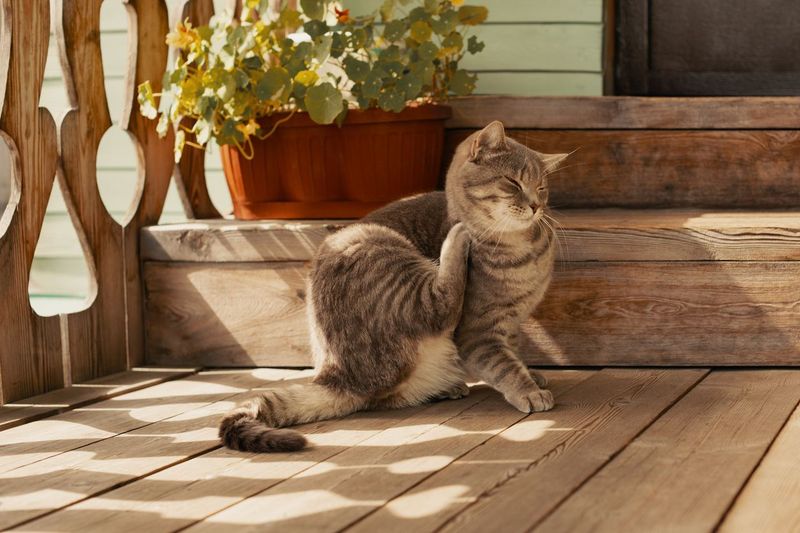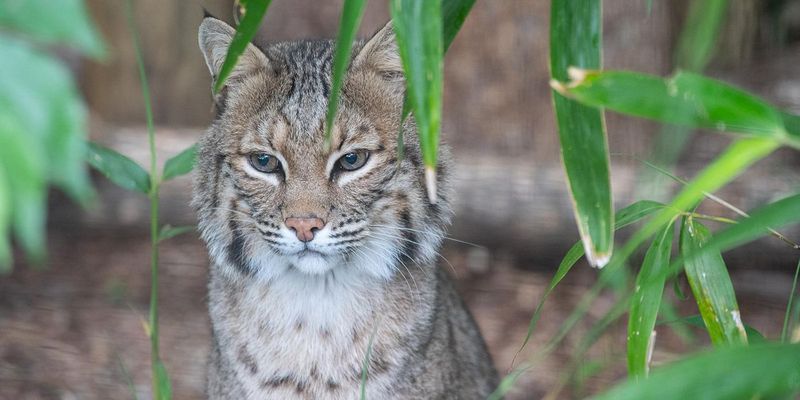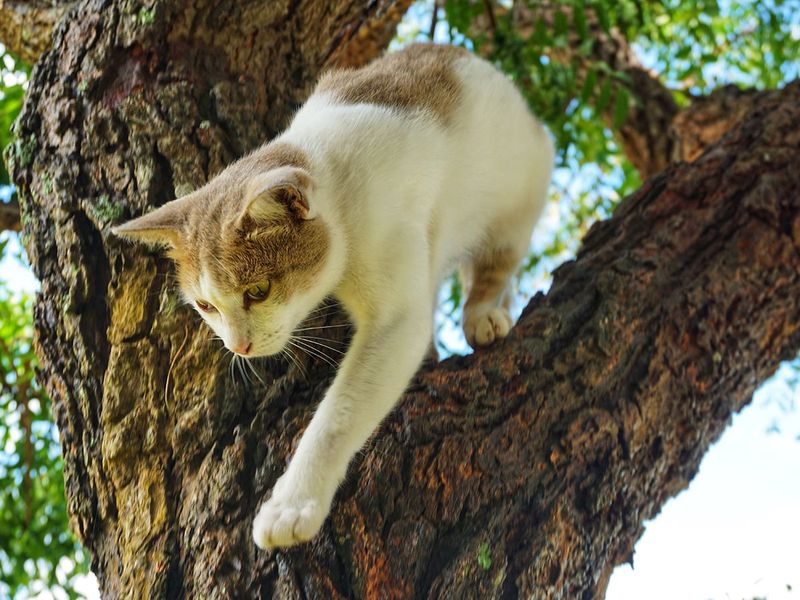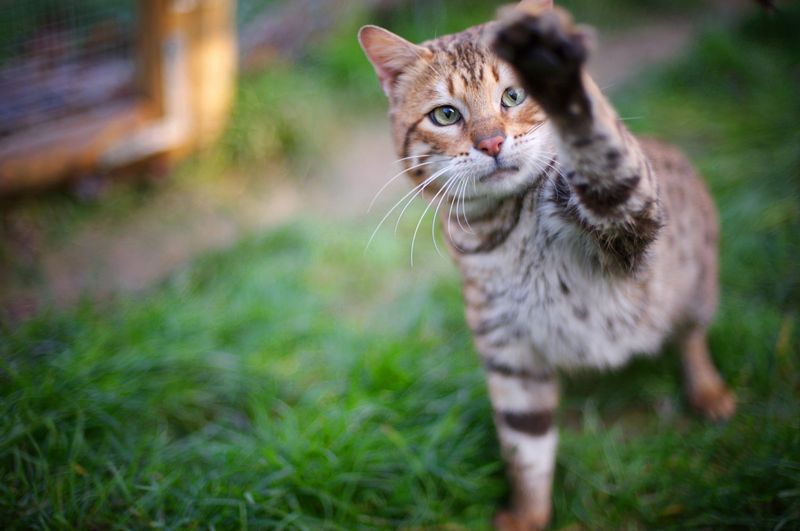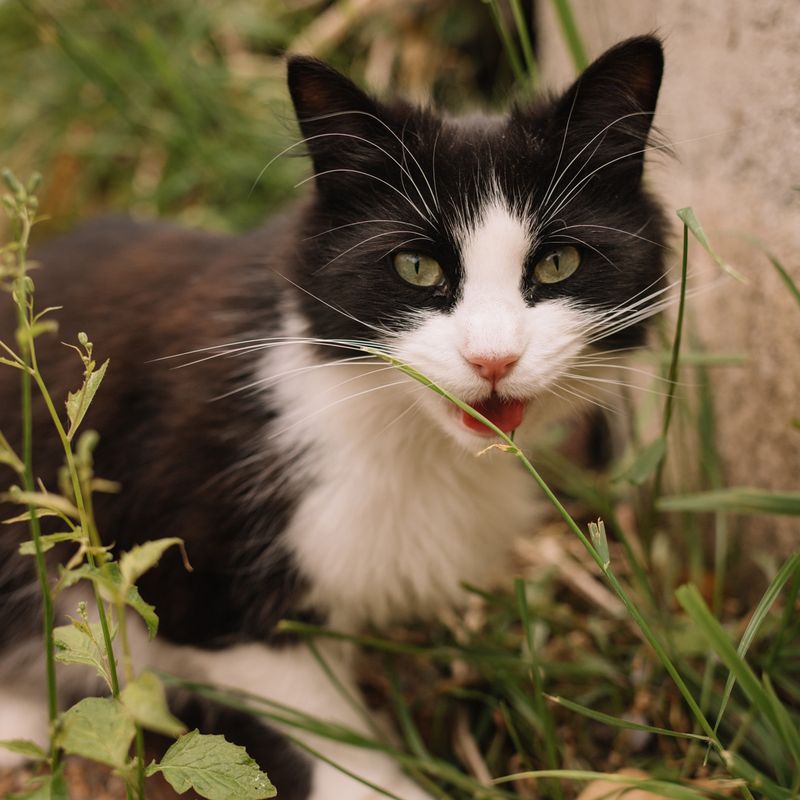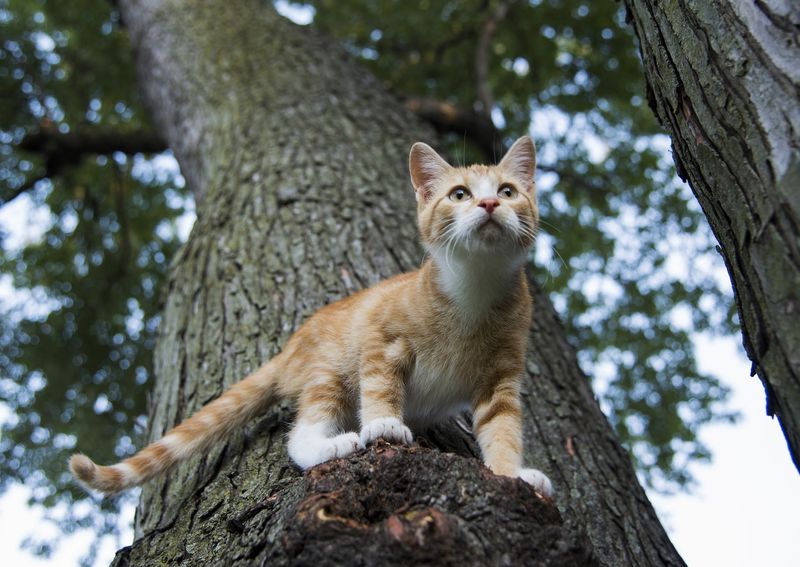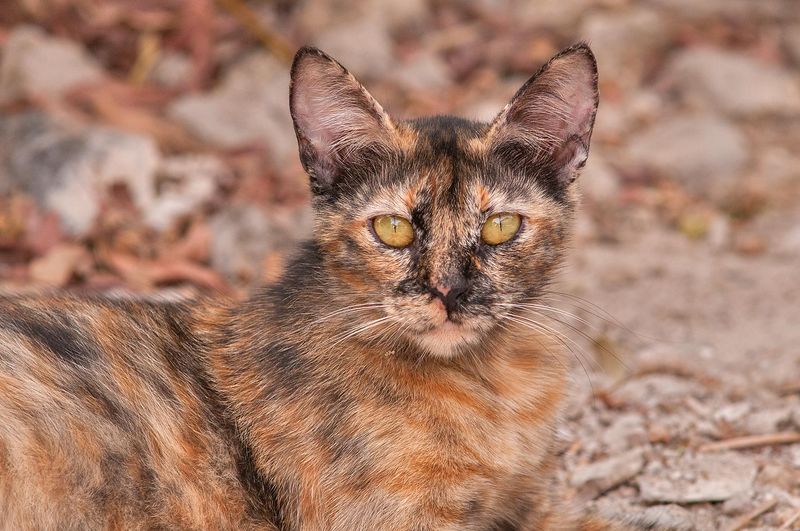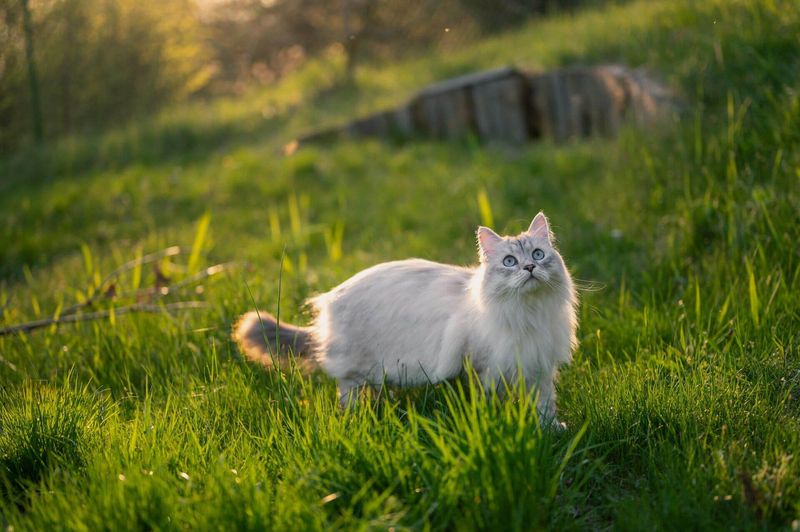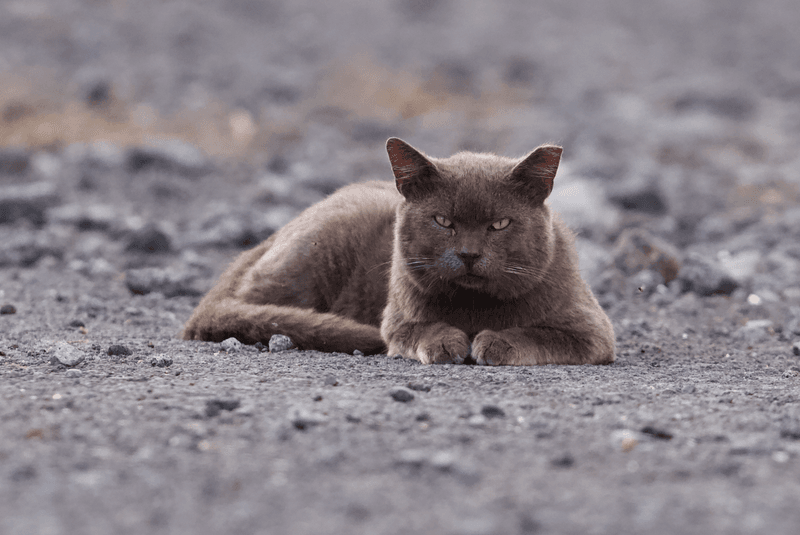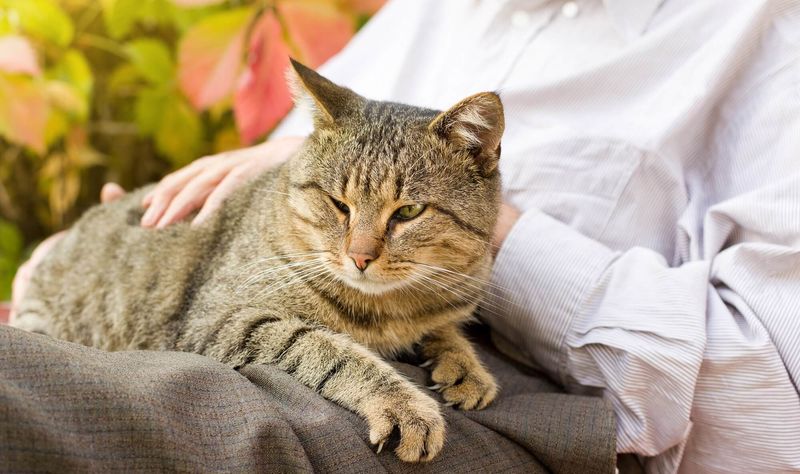📖 Table of Content:
- 1. Keen Hearing
- 2. Sensitive Whiskers
- 3. Sharp Vision
- 4. Acute Sense of Smell
- 5. Intuitive Sixth Sense
- 6. Quick Reflexes
- 7. Heightened Awareness
- 8. Territory Marking
- 9. Cautious Exploration
- 10. Social Cues from Other Animals
- 11. Silent Movement
- 12. Flexible Anatomy
- 13. Pattern Recognition
- 14. Tactile Sensitivity
- 15. Camouflaging Ability
- 16. Adaptability to Weather Changes
- 17. Trust in Instincts
- 18. Experience-Based Learning
Outdoor cats have an extraordinary ability to sense danger, which plays a crucial role in their survival. With their finely tuned senses, they can detect threats long before humans are even aware of them. These instincts have been honed over centuries, allowing them to thrive in environments full of potential hazards.
Their heightened awareness is rooted in their sharp senses of sight, smell, and hearing. Cats are able to detect even the smallest changes in their environment, making them incredibly attuned to potential dangers. From the rustle of leaves to the faintest odor in the air, outdoor cats are always on alert.
Understanding how outdoor cats sense danger reveals just how adaptable and skilled they are at navigating the wild. These natural instincts keep them safe from predators, hazards, and other risks in their environment. Their ability to react swiftly and accurately to threats makes them some of the most efficient survivors in the animal kingdom.
1. Keen Hearing
Cats possess incredibly acute hearing, allowing them to detect even the faintest sounds. This ability is crucial for sensing approaching predators or other dangers. A cat’s ear can swivel to catch sounds from different directions, enhancing its awareness of potential threats.
Their hearing range extends beyond that of humans, making them sensitive to ultrasonic frequencies emitted by rodents, their natural prey. This heightened auditory sense is a key element in their survival toolkit, enabling them to react swiftly to any suspicious noise. Such acute hearing helps cats navigate their environment with confidence and caution.
2. Sensitive Whiskers
Whiskers, or vibrissae, are essential sensory tools for cats. These specialized hairs detect subtle changes in their surroundings. Positioned strategically on their face and forelegs, whiskers help cats sense objects or movements nearby.
In the wild, these sensitive hairs enable them to navigate tight spaces and detect the presence of potential threats. A twitch of their whiskers can alert them to changes in their environment, allowing them to respond quickly. This remarkable sensitivity not only aids in hunting but also in avoiding danger. Whiskers are vital for a cat’s spatial awareness and safety.
3. Sharp Vision
Known for their ability to thrive in the dark, cats have exceptional night vision. Their eyes are rich in rod cells, which enhances their sight in low-light conditions. This trait is vital for detecting predators during the night, ensuring they stay safe in the wild.
Their slit-shaped pupils can expand and contract rapidly, controlling the amount of light entering their eyes. This adaptability ensures that they can see clearly both day and night. This ability to discern shapes and movements in near darkness helps them avoid dangers lurking in the shadows. Sharp vision is crucial for a cat’s nocturnal lifestyle.
4. Acute Sense of Smell
With an extraordinary sense of smell, cats can detect danger long before it becomes apparent. Their highly refined olfactory system allows them to pick up on scents that humans cannot. This skill gives them the ability to sense predators or other animals, helping them stay alert and safe.
Cats use scent-marking to define their territory, and any foreign smell can signal potential danger. Their sense of smell is crucial for recognizing changes in their environment and determining the safety of their surroundings. The olfactory prowess of cats plays a significant role in their ability to sense and avoid danger.
5. Intuitive Sixth Sense
Many believe that cats possess a mysterious sixth sense that allows them to detect danger. This intuition often presents as sudden changes in behavior, such as heightened alertness or avoidance of certain areas.
Cats can sense shifts in energy or atmospheric pressure, which may indicate approaching storms or earthquakes. Their intuitive abilities might also extend to sensing the emotions of their human companions, alerting them to distress or danger. While this sixth sense is not fully understood, it is an integral part of what keeps outdoor cats safe and aware of their environment.
6. Quick Reflexes
Cats are known for their lightning-fast reflexes, an essential trait for survival. This agility allows them to escape threats swiftly, whether it’s dodging a predator or avoiding a moving vehicle. Their muscular build and flexible spine contribute to their quick response times.
A cat’s ability to leap and sprint at a moment’s notice is vital for evading danger. These reflexes also aid in hunting, helping them to capture prey efficiently. Quick reflexes are a cornerstone of a cat’s defensive strategy, ensuring they remain one step ahead of potential threats at all times.
7. Heightened Awareness
Constantly on guard, cats remain vigilant to their surroundings, always scanning for potential threats. This behavior is instinctual, ingrained in them as part of their survival strategy. Their ability to detect even the smallest signs of danger helps keep them safe in unpredictable environments.
Their ability to focus intently allows them to notice changes in their surroundings, such as new scents, sounds, or movements. This heightened state of awareness enables them to react promptly, ensuring their safety. Being alert and attentive is crucial for their survival, especially when navigating the unpredictable outdoors. Cats’ acute awareness makes them formidable survivors.
8. Territory Marking
In the wild, territory marking is a key strategy for survival, and domesticated cats continue this practice. Through scent marking, cats let other animals know that a particular area is off-limits. They do this by rubbing their face or body against objects or spraying urine, which helps keep intruders at bay.
These scent marks relay information about the cat’s identity and territory boundaries, deterring other animals from encroaching. When another cat or predator enters their marked territory, the resident cat becomes alert to the potential threat. Territory marking is a crucial strategy for maintaining control and safety within their environment.
9. Cautious Exploration
Outdoor cats are natural explorers, but they do so with caution. Before venturing into new territory, they often survey the area, using their senses to assess potential risks. This behavior ensures they are aware of any changes or threats in their environment.
Their cautious nature helps them avoid dangerous encounters with predators or other hazards. By taking calculated risks, they can explore safely while staying alert to possible dangers. Such cautious exploration is a vital component of their survival strategy, allowing them to balance curiosity with the need for safety.
10. Social Cues from Other Animals
By keenly observing the body language, sounds, and scents of other animals, cats can quickly assess potential dangers. Their ability to read these social cues is vital for their survival. This skill helps them decide when to approach or retreat, depending on the threat level.
This skill enables them to coexist with other wildlife by avoiding confrontations with aggressive animals. By understanding social cues, cats can navigate their environment more safely and efficiently. Developing these social skills is crucial for survival, especially in diverse ecological settings. The ability to interpret the behaviors of other animals is essential for a cat’s safety and well-being.
11. Silent Movement
The art of silent movement is a survival tactic mastered by cats. Their soft pads and retractable claws enable them to move quietly, avoiding detection by potential threats. This stealthy approach is essential when stalking prey or evading predators.
By minimizing noise, they can approach situations undetected, giving them an advantage in both hunting and defense. Silent movement also allows them to observe their surroundings without alerting others to their presence. This skill is vital for staying safe in the wild, where any sound could attract unwanted attention. Mastery of silent movement is key to survival.
12. Flexible Anatomy
Thanks to their impressive flexibility, cats can maneuver through tight spaces and tricky terrains without breaking a sweat. Their highly mobile joints and supple spine let them twist and bend in ways that would be impossible for many other animals.
This flexibility is crucial for escaping tight spots, climbing trees, or dodging predators. It also aids in agility, allowing them to make swift turns and leaps. By leveraging their anatomical advantages, cats can avoid danger and move through their environment with grace and precision. Their flexible anatomy is a fundamental aspect of their survival strategy, enhancing their ability to evade threats.
13. Pattern Recognition
Cats have a remarkable ability for pattern recognition, helping them identify potential dangers. By observing and memorizing patterns in their environment, they can detect changes that might signal threats.
This includes recognizing the regular movements of other animals, changes in weather, or alterations in their territory. Such keen observation skills allow cats to anticipate potential problems and react accordingly. Pattern recognition is a vital cognitive skill that aids in survival, allowing them to stay alert and responsive to their surroundings. This ability to discern patterns helps keep them safe in their outdoor adventures.
14. Tactile Sensitivity
With their incredible tactile sensitivity, cats can detect even the slightest vibrations and textures in their surroundings. Their sensitive paw pads act as an early warning system, allowing them to sense changes in their environment.
This tactile perception aids in determining the safety of surfaces they walk on and detecting the presence of prey or predators. By feeling vibrations in the ground, they can sense approaching threats even before they are visible. Tactile sensitivity enhances their ability to navigate their surroundings safely, ensuring they can react promptly to any potential dangers. This sense is vital for their everyday survival.
15. Camouflaging Ability
The ability to camouflage themselves is one of a cat’s most valuable traits. Their fur blends perfectly with their environment, providing a disguise that helps them avoid predators and sneak up on their prey. This natural camouflage is a key factor in their success as hunters and survivors.
When resting or observing, they can remain unnoticed, reducing the risk of attracting danger. Camouflage is a silent yet effective defense mechanism, allowing them to survey their environment without drawing attention. This natural ability to conceal themselves is an essential part of a cat’s survival strategy, helping them remain stealthy and protected in the wild.
16. Adaptability to Weather Changes
Known for their impressive adaptability, cats can easily adjust to fluctuating weather conditions. Their thick fur helps protect them from the cold, while their ability to seek shelter keeps them safe during heavy rain or scorching heat. This skill is essential for their survival in varied environments.
Their ability to sense atmospheric changes allows them to seek refuge before storms hit. This proactive behavior helps them avoid discomfort and potential danger from harsh weather conditions. Adaptability to weather changes ensures that outdoor cats can thrive in diverse environments, maintaining their well-being and safety regardless of climate challenges.
17. Trust in Instincts
Deeply instinctual, cats depend on their natural instincts to survive in the wild. Their ability to trust their intuition allows them to make swift, life-saving decisions, such as avoiding predators or seeking safety. These instincts are finely tuned, keeping them alert and prepared for danger.
By trusting their instincts, they can navigate complex environments and avoid potential threats. This reliance on instinct is a fundamental aspect of their behavior, ensuring they remain vigilant and prepared for any challenges. Trusting their instincts allows outdoor cats to maintain their safety and thrive in the wild.
18. Experience-Based Learning
Drawing on their past encounters, cats use experience to guide their responses to potential threats. This learned behavior helps them avoid danger by recalling previous escapes or dangers. With each experience, they refine their ability to assess and react to new challenges.
This learning process is continuous, allowing them to refine their survival strategies over time. Older cats, in particular, benefit from a wealth of knowledge gained through years of outdoor exploration. Experience-based learning is a critical component of their ability to adapt and survive in ever-changing environments. It enables them to stay one step ahead of potential dangers.
